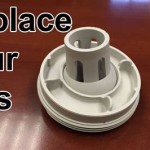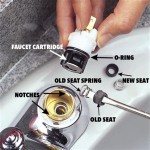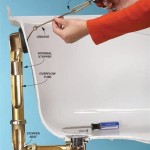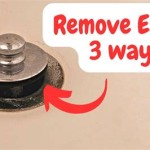Volume Of A Bathtub In Cubic Meters
Determining the volume of a bathtub is a practical task that can arise in various contexts. Whether remodeling a bathroom, calculating water usage, or designing plumbing systems, understanding how to calculate the volume of a bathtub in cubic meters is essential. This article will provide a comprehensive guide to measuring and calculating the volume of a standard bathtub, addressing common bathtub shapes, measurement techniques, and the conversion process to obtain the final volume in cubic meters. Additionally, factors influencing the actual usable volume and the implications for water consumption will be examined.
The importance of calculating bathtub volume extends beyond mere curiosity. Accurate volume calculations are crucial for: Selecting appropriately sized water heaters, ensuring adequate hot water supply for comfortable bathing. Optimizing water usage and reducing water waste by understanding how much water is actually needed to fill the tub to a usable level. Designing plumbing systems that can handle the demand for water during peak usage times. Estimating the weight of the filled bathtub, which is essential for structural considerations during bathroom construction or renovation. Comparing different bathtub models and making informed purchasing decisions based on capacity.
Bathtubs come in a variety of shapes and sizes, each requiring a specific approach to volume calculation. Standard rectangular bathtubs are the most common type, but other shapes, such as oval, corner (or neo-angle), and freestanding tubs, present unique measurement challenges. The dimensions required for calculation also vary depending on the shape. For rectangular tubs, length, width, and depth are needed. For oval tubs, the length and width at the widest points, along with the depth, are necessary. Corner tubs often require multiple length and width measurements due to their irregular shape. Freestanding tubs can have complex curves, necessitating accurate measurements at various points to estimate the overall volume accurately.
Measuring a Bathtub for Volume Calculation
Accurate measurement is the foundation of a reliable volume calculation. The tools required for measuring a bathtub are relatively simple: a measuring tape (preferably a flexible one for curved surfaces), a level (to ensure the depth measurement is taken vertically), and a notepad and pen (or a digital device) to record the measurements. Before beginning, it is crucial to identify the relevant dimensions based on the bathtub's shape. For a rectangular bathtub, measure the length, width, and depth. Length is the longest dimension along the bottom of the tub, width is the shorter dimension along the bottom, and depth is the vertical distance from the bottom of the tub to the overflow drain. These measurements should be taken from the inside of the tub, excluding any rim or external features.
When measuring a bathtub, adhere to these guidelines for accuracy: Use a flexible measuring tape to follow the contours of the tub, especially for curved or non-rectangular shapes. Take multiple measurements of length and width, especially if the tub has variations in its shape. For depth, use a level to ensure the measurement is taken vertically from the lowest point of the tub to the overflow drain. Round measurements to the nearest centimeter or millimeter for greater precision. Record all measurements clearly and label them appropriately (e.g., "Length," "Width," "Depth"). Double-check all measurements to minimize errors. Remember to measure the interior dimensions of the bathtub, rather than the exterior dimensions, to accurately reflect the water-holding capacity.
Several common errors can lead to inaccurate volume calculations. Measuring the exterior dimensions instead of the interior dimensions will result in an overestimation of the volume. Not using a level when measuring depth can lead to inconsistencies and inaccuracies. Failing to account for variations in shape, such as curved sides or angled corners, can also skew the results. Rounding measurements too liberally can introduce significant errors, especially when dealing with larger bathtubs. Inconsistent use of units (e.g., mixing inches and centimeters) is a frequent source of mistakes. Neglecting to consider the displacement caused by the bather's body can also affect the usable volume, though this is generally not considered in the initial calculation.
Converting Measurements to Cubic Meters
Once the bathtub's dimensions have been accurately measured, the next step is to convert these measurements into meters. This is crucial because the final volume calculation will be in cubic meters (m³). The standard unit conversion factors are: 1 centimeter (cm) = 0.01 meters (m), 1 millimeter (mm) = 0.001 meters (m), and 1 inch (in) = 0.0254 meters (m). To convert the measurements, simply multiply each dimension by the appropriate conversion factor. For example, if the length of the bathtub is 170 cm, converting it to meters would be 170 cm x 0.01 m/cm = 1.70 m. Similarly, if the width is 75 cm, it converts to 0.75 m, and if the depth is 40 cm, it converts to 0.40 m. Ensure that all measurements are converted to meters before proceeding with the volume calculation.
The calculation of the volume depends on the shape of the bathtub. For a rectangular bathtub, the volume is calculated by multiplying the length, width, and depth: Volume = Length x Width x Depth. Using the example measurements from above (length = 1.70 m, width = 0.75 m, depth = 0.40 m), the volume would be: Volume = 1.70 m x 0.75 m x 0.40 m = 0.51 m³. For an oval bathtub, the calculation is slightly more complex. The area of an ellipse (the oval shape) is given by πab, where a is half the length and b is half the width. Therefore, the volume of an oval bathtub is approximately Volume = π x (Length/2) x (Width/2) x Depth. The calculation for corner bathtubs may involve approximating the shape as a combination of rectangles and triangles, calculating the volume of each section, and then summing the results.
The unit of volume obtained from these calculations is cubic meters (m³). A cubic meter is the volume of a cube with sides of one meter each. It is a standard unit for measuring large volumes, making it suitable for quantifying the amount of water a bathtub can hold. To put the volume in perspective, one cubic meter is equivalent to 1000 liters, or approximately 264 US gallons. Therefore, a bathtub with a volume of 0.51 m³ can hold 510 liters of water. Understanding the volume in cubic meters allows for direct comparison with other volume measurements commonly used in plumbing and water management.
Factors Affecting Usable Bathtub Volume and Water Consumption
The theoretical volume of a bathtub, as calculated above, represents the total capacity of the tub. However, the actual usable volume is often less due to several factors. The overflow drain is designed to prevent the tub from overflowing, limiting the maximum water level. The shape of the tub can also affect the usable volume. Tubs with sloping sides or irregular shapes may have a significant portion of their volume that is not usable for bathing. The size and posture of the person using the tub will also displace water, reducing the amount of water that can be added without overflowing. The presence of features like armrests or molded seats can further reduce the available space for water.
To estimate the usable volume more accurately, consider the following: Measure the depth to the overflow drain, rather than the full depth of the tub. Account for the slope of the tub's sides by taking measurements at different heights and calculating an average depth. Consider the average size of bathers who will be using the tub and estimate the displacement volume. For tubs with complex shapes, consider using water displacement methods to directly measure the volume. Fill the tub to a comfortable level, and then carefully measure the amount of water added. By accounting for these factors, a more realistic estimate of the usable volume can be obtained.
Understanding the volume of a bathtub directly relates to water consumption. Estimating the water usage for bathing is essential for several reasons, including: Selecting an appropriately sized water heater to ensure an adequate supply of hot water. Calculating water bills and monitoring water consumption habits. Designing water-efficient bathrooms and implementing conservation measures. Assessing the environmental impact of bathing and identifying ways to reduce water waste. Factors influencing water consumption include the frequency of baths, the water level used for each bath, and the temperature of the water. Implementing water-saving strategies, such as using low-flow showerheads and taking shorter showers, can significantly reduce water consumption.

Bathtub Water Usage And Cost
Solved Please Post Steps Taken To Find Answer And Why The Chegg Com

Solved Estimate The Volume Of A Bath Tub Sorry For Lack Information This Question Is Hypothetical So Any Set Numbers Would Work Just Assuming I Am

Cubic Meter Definition Formula Conversion Lesson Study Com

Bathtub Water Usage And Cost

Volume Calculator

Solved A Rectangular Bathtub Has Volume Of 10 M³ How Many Liters Water Are Needed To Fill It If The Tub Is Half Filled Cm³ There
How To Find Volume In Cubic Meters Quora

Solved A Rectangular Bathtub Has Volume Of 10 M³ How Many Liters Water Are Needed To Fill It If The Tub Is Half Filled Cm³ There

Identify The Most Reasonable Unit To Measure Volume Of A Bathtub
Related Posts







